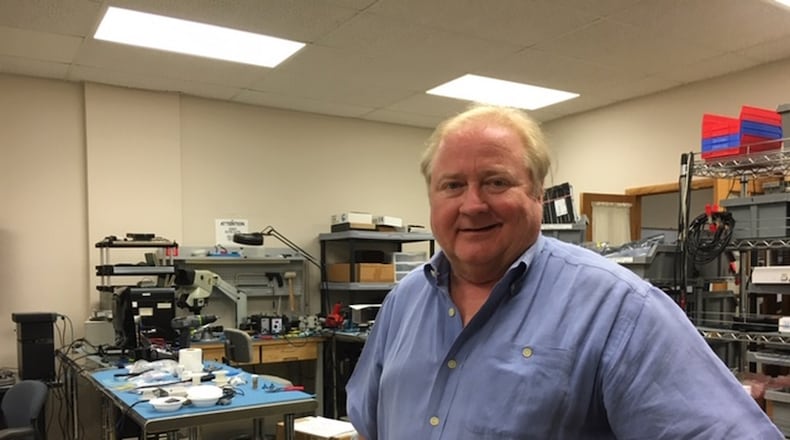“That’s my ambition. It hasn’t come to pass. But who knows. We still might do it,” Appenzeller said in an interview in his company’s Senate Drive offices.
RELATED: Business owners after tornado damage: 'We don't know what to do here'
The journey has been a hard slog, through government spending sequestrations and other setbacks, said Appenzeller, DragoonITCN’s chief technology officer.
The company Appenzeller started, Dragoon Technologies, bought ITCN Inc. in 2013. The late Roy Penwell ran ITCN and founded the company in 1992, the same year Appenzeller started Dragoon.
“He really put us on the map as far as specialized test equipment,” Appenzeller said of Penwell. “He was a legend.”
Through a patent license agreement with the Naval Air Warfare Center’s Aircraft Division in Lakehurst, N.J., DragoonITCN will bring to market what the company calls its “Smart Connector,” an electronics diagnostic tool that isolates faults within aircraft avionics hardware.
The company’s main product is a diagnostic tool dubbed “CORVUS,” developed through the Air Force Research Laboratory’s Small Business Innovation Research program. (AFRL, of course, is based at Wright-Patterson Air Force Base.)
The idea behind the complex technology is simple: Help mechanics keep older “legacy aircraft” flying for as long as safely possible.
The company’s technology allows “talk” between a processor and an avionics — aviation electronics — flight management system.
“It’s really the lifeline of what’s going on inside an aircraft, for avionics and weapons systems,” Appenzeller said. “They use this bus (communication) structure to communicate and actually do traffic cop things — make sure this bomb is ready to drop and so on.”
RELATED: Business owners after tornado damage: 'We don't know what to do here'
The technology can inject “faults” into a system to help simulate problems. The idea is to test an avionics system as rigorously and realistically as possible.
Motorists know the frustration: They encounter a problem with a car that their auto mechanics can’t find.
It happens to pilots, too.
“The biggest problem people have in maintenance in this business is what they call a ‘no fault found,’” he said. “The pilot sees something in the air, he lands it, the mechanics come out, and they say, ‘It works for us.’”
“It drives them crazy,” he added.
The Lakehurst agreement is a “real godsend,” the CTO said. The idea is to take military innovations and apply them to the commercial market.
“That’s a real big thing right now, DoD (Department of Defense)-wide. They want to see proprietary technology applied to commercial items,” he said.
The transfer can work both ways. If civilian company create a “widget” that the military can use, the government gets out its “credit card,” Appenzeller said.
Troy Carter, a senior writer and editor for TechLink — a Montana outfit that links businesses to military technologies — likes what he sees with Appenzeller and his crew of about 11 employees.
“Robert is great at networking, which is so important for small and mid-sized companies who want to be competitive and successful working with DoD customers,” Carter said. “I also think Dragoon’s size and skill-set give it the ability to actually take a good idea and develop new products and services around it.
“The aerospace industry is typically dominated by much bigger companies, but here is Dragoon showing us all what’s possible,” Carter added.
About the Author

